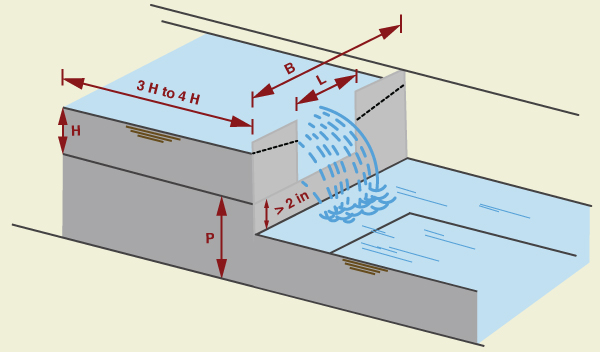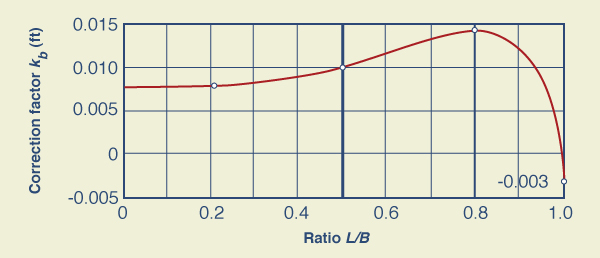|
Online Rectangular Weir Calculator
131028
The program online_rectangular_weir
calculates the
discharge through a rectangular weir (Fig. 1).
To produce full contraction, the crest and sides of the weir plate are placed sufficiently
far enough from the bottom and sides
of the approach channel.
The computation procedure follows Section 6 of Chapter 7 of
the USBR Water Measurement Manual.
Fig. 1 Rectangular weir schematic.
The Kindsvater-Carter formula for a rectangular weir, in U.S. Customary units, is:
in which Ce = effective coefficient of discharge; L = length of the weir crest, in ft, kb = a correction factor to obtain effective weir length, in ft; H = head measured above the weir crest, in ft; and Q = discharge, in cfs. The value B is the average width of the approach channel.
The correction factor kb is a function of the ratio
L/B, as shown in Fig. 2.
Fig. 2 Correction factor kb to obtain effective weir length.
The effective coefficient of discharge Ce includes effects of relative depth and relative width
of the approach channel. It is a function of H/P
and L/B, as shown in Fig. 3.
Fig. 3 Values of Ce as a function of H/P and L/B. Given H, L, B and P, and the ratios H/P and L/B, the computation proceeds with the following steps:
The rectangular weir equation (Eq. 1) is subject to the following restrictions:
|
| 131103 |



